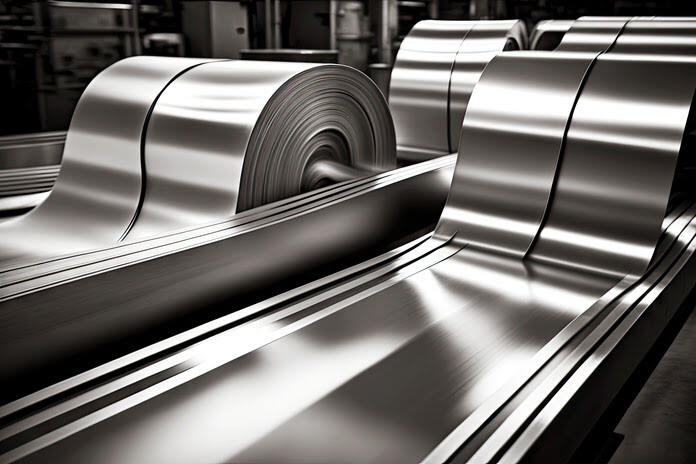This year has posed significant challenges for aluminum prices (ALU23). The aluminum futures benchmark on the London Metal Exchange (LME) has seen a drop of nearly 20% since its peak in January, and a staggering 40% decline from last year’s highs. These declines have been largely attributed to economic weaknesses in Europe and the U.S., as well as diminished construction demand in China.
The current three-month futures contract on the LME hovers around $2,180 per metric ton, a sharp drop from the previous year’s peak of over $3,840 per ton. This year’s slump in aluminum prices reflects the long-anticipated but yet-to-materialize global economic slowdown. Aluminum is a versatile metal used in various industries, including construction, automotive, aerospace, and renewable energy, making its prices a key indicator of expected industrial activity.
However, industry insiders and analysts are growing increasingly optimistic about the medium-term prospects for aluminum, particularly due to the surging demand for clean technologies. Industries such as electric vehicles (EVs) and solar panels are driving this demand. Solar farms, for instance, rely on aluminum for frames and mounting solar panels, and electric vehicles require more aluminum compared to traditional internal combustion engine cars.
Presently, aluminum prices are at levels last seen in early 2021, suggesting that they may be “nearing a bottom,” according to experts. An interesting development is the recent increase in contango for aluminum prices, indicating that aluminum purchased currently is priced lower than future expectations. This reflects both weak immediate demand and the anticipation of higher future prices.
While there is currently a global surplus of just over 800,000 metric tons of aluminum this year, which has been suppressing prices, there are signs that the situation may be changing. Surprisingly, China has been a bright spot in aluminum demand, driven by substantial investments in clean energy infrastructure, offsetting declining demand from the indebted Chinese property sector. In fact, China’s imports of aluminum increased by 20% in July compared to the previous year.
In conclusion, despite the recent challenges, the outlook for aluminum appears more promising in the medium term. One way to potentially benefit from this recovery is by considering investment in Alcoa (NYSE:AA) stock.
Alcoa’s Outlook
Alcoa (NYSE:AA), established in 1888, is among the world’s largest aluminum producers. The company operates across the entire aluminum production process, from bauxite mining to alumina refining, aluminum production (smelting and casting), and energy generation. With operations in 27 locations across 9 countries and 6 continents, Alcoa is a global leader in the industry.
Alcoa’s diverse portfolio includes the world’s largest bauxite mining assets, a globally distributed alumina refining system, and a substantial aluminum smelting portfolio. The company is a major bauxite miner, with access to extensive bauxite deposits and mining rights extending over 20 years in most cases. Alcoa owns and operates seven bauxite mines globally, including the second-largest bauxite mine in the world, the Huntly mine in Australia.
Furthermore, Alcoa is the world’s largest producer of alumina outside of China, boasting a highly competitive cost position. It operates seven refineries across four continents, including the Pinjarra refinery in Western Australia, one of the world’s largest alumina production facilities. Besides supplying feedstock to its aluminum smelters, Alcoa also sells a significant portion of its alumina production to external parties.
Despite a 45% decline in Alcoa’s stock over the past year and a 37.6% decline year-to-date, it currently trades at just over $28 per share. Even a return to $35 per share would result in an enterprise value/earnings before interest, taxes, depreciation, and amortization (EV/EBITDA) ratio of 4.8 times its 2024 EBITDA estimate, in line with its three-year average forward EV/EBITDA but at a discount compared to its peers, which trade at an average of 7.5 times.
Given Alcoa’s attractive valuation and strong free cash flow yield, it appears well-positioned to meet the growing structural demand from electrification and the global energy transition. Investors may consider purchasing Alcoa (AA) stock at prices below $30 per share.
Featured Image: Freepik @ studioworkstock















